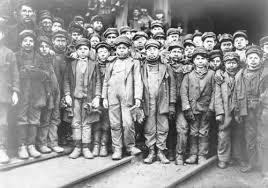“Ideologies of Change and Reform Movements” – Everything You Need to Know
Across centuries and continents, humanity has grappled with the need to evolve—politically, socially, and economically. From sweeping revolutions to gradual reform, various movements have sought to reshape societies to better reflect the values, aspirations, and challenges of their times. In this comprehensive guide on Ideologies of Change and Reform Movements, we will delve into the diverse beliefs and strategies that have driven transformation throughout history. Whether you’re a student of history, a social activist, or simply curious about how ideas fuel progress, this post will equip you with the knowledge to understand these dynamic forces and their continuing impact today.
Introduction: Embracing Transformation
Imagine a world where the power of ideas can overturn centuries-old traditions and spark profound societal transformation. Did you know that many of today’s democratic rights, social justice principles, and even economic policies can trace their roots back to reform movements driven by visionary ideologies? In this article on Ideologies of Change and Reform Movements, we explore the intellectual and practical foundations that have led people to demand—and sometimes force—a better future.
In this post, we will cover:
- A clear definition of Ideologies of Change and Reform Movements and their essential characteristics.
- Historical context and milestones that have shaped these ideologies.
- A deep dive into key types of reform movements, including examples, case studies, and real-world scenarios.
- The significance and long-term benefits of understanding these ideologies in everyday life, society, and business.
- Common misconceptions and FAQs to clarify misunderstandings.
- An analysis of modern trends and the evolving nature of reform movements in today’s world.
By exploring Ideologies of Change and Reform Movements, you’ll not only gain insight into how historical reforms were driven but also learn how these ideas continue to inspire modern innovation, policy-making, and cultural shifts.
What Are “Ideologies of Change and Reform Movements”?
Defining the Concept
Ideologies of Change and Reform Movements refer to the system of ideas, values, and beliefs that motivate individuals and groups to pursue societal transformation. These ideologies provide the theoretical foundation for efforts to modify or overhaul existing political, economic, and social systems in order to create a more just, equitable, or progressive society. They are characterized by several key properties:
Vision for a Better Future:
At their core, these ideologies articulate a vision of what society could be if certain reforms were implemented. They often critique the status quo and propose alternatives that promise improved governance, greater equality, or enhanced freedoms.Focus on Gradual or Radical Change:
Some reform movements advocate for incremental, evolutionary change, while others push for more radical, revolutionary transformations. Despite the differences in approach, both share a commitment to progress.Intellectual and Moral Foundations:
These ideologies are rooted in philosophical, ethical, or political theories. They draw on the works of influential thinkers—from Enlightenment philosophers to modern social theorists—to justify and guide their reform agendas.Broad Scope of Impact:
Reform movements can target a wide range of societal aspects, including governance, legal systems, economic structures, social justice, environmental policies, and cultural norms.Mobilization of Public Support:
Successful reform movements not only rely on well-articulated ideologies but also engage in mass mobilization, public debate, and grassroots activism to bring about change.
Understanding these characteristics is crucial to grasp how Ideologies of Change and Reform Movements have shaped—and continue to influence—the evolution of societies around the world.
Historical and Contextual Background
The Origins and Evolution of Reform Ideologies
The desire for change is as old as civilization itself. Throughout history, people have questioned prevailing systems and sought to create new frameworks that better serve human needs. The modern concept of Ideologies of Change and Reform Movements gained significant momentum during key historical periods:
Enlightenment and the Birth of Modern Reform
Intellectual Awakening:
The Enlightenment (17th–18th centuries) laid the intellectual foundation for modern reform ideologies. Philosophers such as John Locke, Voltaire, and Jean-Jacques Rousseau championed ideas of individual rights, reason, and the social contract. Their writings challenged traditional authority and paved the way for political revolutions and democratic reforms.Political and Social Upheaval:
The American Revolution (1775–1783) and the French Revolution (1789–1799) were direct outcomes of Enlightenment ideals. These revolutions demonstrated the power of reform ideologies to upend established orders and inspire radical new systems of government.
19th-Century Reform Movements
Industrialization and Social Change:
The rapid industrialization of the 19th century transformed economies and societies, leading to significant social dislocations. As wealth became concentrated in the hands of a few, reform movements emerged to address issues like labor rights, economic inequality, and public health. Socialists, liberals, and other reformers sought to harness new ideas to mitigate the negative effects of industrialization.Nationalism and Self-Determination:
The 19th century also saw the rise of nationalist ideologies that spurred movements for self-determination and national unification. These ideologies challenged multiethnic empires and advocated for the right of peoples to govern themselves.Feminist and Abolitionist Movements:
Alongside political and economic reforms, movements advocating for gender equality and the abolition of slavery took shape, driven by ideologies that emphasized human dignity and universal rights.
20th-Century and Contemporary Transformations
Civil Rights and Social Justice:
The mid-20th century witnessed a new wave of reform movements focused on civil rights, gender equality, and social justice. Influenced by earlier ideologies, these movements used nonviolent protest, legal challenges, and grassroots organizing to secure significant reforms in the United States, Europe, and beyond.Environmental and Global Movements:
More recently, ideologies of change have expanded to address global challenges such as climate change, sustainable development, and human rights. Modern reform movements continue to evolve, often integrating digital activism and transnational networks to drive change.
Notable Historical Anecdotes
The Abolition of Slavery:
Reformers like Frederick Douglass and William Wilberforce championed the cause of abolition, arguing from a moral and philosophical perspective that all human beings deserve freedom and dignity. Their tireless work eventually led to the abolition of slavery in Britain and the United States, demonstrating the transformative power of well-articulated reform ideologies.The Suffrage Movement:
The fight for women’s voting rights, which spanned decades and continents, is a compelling example of how ideologies of change can mobilize entire populations. Pioneers like Susan B. Anthony and Emmeline Pankhurst used persuasive arguments grounded in equality and justice to secure one of the most important civil rights victories of the modern era.
In-Depth Exploration of Ideologies of Change and Reform Movements
To fully understand Ideologies of Change and Reform Movements, we need to explore their key dimensions, including the underlying principles, major categories, and real-world examples. Below, we break down these aspects into detailed sections.
1. Political and Economic Ideologies
a. Liberalism: Advocating for Individual Rights and Democratic Governance
Core Principles:
Liberalism is founded on the belief in individual liberty, equality before the law, and representative government. It advocates for limited government intervention in personal affairs while promoting free markets and economic opportunity.Historical Impact:
The liberal revolutions of the 18th and 19th centuries played a crucial role in dismantling absolute monarchies and establishing constitutional democracies. The American and French Revolutions are prime examples of liberal ideals in action.Modern Applications:
Today, liberalism continues to influence political debates on civil rights, free speech, and economic policy. Modern liberal democracies strive to balance individual freedoms with the need for collective welfare.
b. Socialism and Marxism: Pursuing Economic Equality and Collective Welfare
Core Principles:
Socialism and its more radical variant, Marxism, emphasize the redistribution of wealth, collective ownership of the means of production, and the eradication of class distinctions. They critique capitalist systems for perpetuating inequality and exploitation.Historical Impact:
The industrial revolution and the resultant social disparities fueled the rise of socialist movements in the 19th century. Karl Marx and Friedrich Engels provided a theoretical framework that inspired numerous political movements and revolutions, notably in Russia and later across Eastern Europe.Modern Applications:
While pure Marxist revolutions have largely given way to more moderate social democratic policies, the influence of socialist thought is evident in modern welfare states and debates over income inequality and workers’ rights.
c. Conservatism: Preserving Tradition Amid Change
Core Principles:
Conservatism emphasizes the value of tradition, social order, and gradual change rather than radical upheaval. It prioritizes stability and continuity, advocating for reforms that evolve organically rather than through disruptive revolution.Historical Impact:
In the wake of rapid industrialization and revolutionary fervor, conservative ideologies emerged as a counterbalance. Figures such as Edmund Burke championed the idea that reforms should respect the accumulated wisdom of past generations.Modern Applications:
Conservatism continues to play a significant role in political discourse, particularly in debates over social policy, national identity, and the balance between progress and stability.
2. Social and Cultural Ideologies
a. Feminism: The Movement for Gender Equality
Core Principles:
Feminism seeks to achieve equality between genders through social, political, and economic reforms. It challenges patriarchal structures and advocates for equal rights, opportunities, and representation for women and gender minorities.Historical Impact:
The feminist movements of the 19th and 20th centuries have led to major legal and societal changes, including women’s suffrage, workplace rights, and broader social recognition of gender equality.Modern Applications:
Feminism continues to evolve, addressing contemporary issues such as gender identity, reproductive rights, and intersectional inequality. It remains a driving force in both local and global reform movements.
b. Civil Rights and Racial Justice: Demanding Equality for All
Core Principles:
Civil rights ideologies focus on eliminating racial discrimination and ensuring equal treatment under the law. They challenge systemic racism and advocate for social, economic, and political inclusion.Historical Impact:
The civil rights movements, particularly in the United States during the mid-20th century, led to landmark legislation such as the Civil Rights Act and the Voting Rights Act. Leaders like Martin Luther King Jr. and Rosa Parks became symbols of the struggle for justice.Modern Applications:
Issues of racial justice continue to be at the forefront of social reform, with movements such as Black Lives Matter highlighting ongoing challenges and sparking widespread debates on police reform, economic disparity, and institutional racism.
c. Environmentalism: Reforming for a Sustainable Future
Core Principles:
Environmental ideologies advocate for the preservation of natural ecosystems, sustainable resource use, and proactive policies to combat climate change. They emphasize the interdependence of human and environmental health.Historical Impact:
Although environmentalism gained prominence in the late 20th century, its roots can be traced back to earlier conservation movements that emerged in response to industrial pollution and deforestation.Modern Applications:
Today, environmental reform is a global priority. The development of green technologies, international climate agreements like the Paris Accord, and grassroots movements for sustainability reflect the ongoing evolution of environmental ideologies.
3. Religious and Ethical Ideologies
a. Religious Reform Movements
Core Principles:
Many religious traditions have undergone periods of reform aimed at renewing spiritual life and addressing contemporary challenges. These movements often seek to balance tradition with modernity while reinterpreting sacred texts in light of current values.Historical Impact:
From the Protestant Reformation in the 16th century to various modern evangelical and progressive movements, religious reform has played a crucial role in shaping cultural and political landscapes.Modern Applications:
Religious reform continues to influence debates on morality, social justice, and community values. Interfaith dialogues and movements for religious tolerance reflect ongoing efforts to harmonize diverse belief systems in a pluralistic society.
b. Ethical Movements and Humanism
Core Principles:
Ethical ideologies and humanism prioritize the intrinsic value of human beings and advocate for moral principles such as compassion, justice, and equality. These movements often promote secular approaches to ethics and governance.Historical Impact:
The development of humanistic thought, particularly during the Renaissance and Enlightenment, laid the groundwork for modern ethical frameworks that inform contemporary debates on bioethics, human rights, and social responsibility.Modern Applications:
Today, ethical reform movements influence areas as diverse as corporate social responsibility, medical ethics, and international human rights policies, emphasizing the need for a moral framework in an increasingly complex world.
4. Case Studies and Real-World Examples
a. The Progressive Movement in the United States
Overview:
The Progressive Movement, which reached its peak in the early 20th century, sought to address the social and economic problems caused by industrialization, urbanization, and political corruption.Key Reforms:
- Labor reforms including child labor laws, workplace safety regulations, and the establishment of fair wages.
- Political reforms aimed at curbing the influence of political machines and promoting greater democratic participation through initiatives like direct primaries and the initiative referendum.
- Social reforms such as the push for women’s suffrage, prohibition, and public health improvements.
Impact:
The Progressive Movement left a lasting legacy in American political and social life, laying the foundation for modern regulatory frameworks and social welfare policies.
b. The European Social Democratic Tradition
Overview:
In response to the harsh realities of industrial capitalism, social democratic movements in Europe emerged as a middle ground between radical socialism and conservative order.Key Reforms:
- The establishment of welfare states with universal healthcare, free education, and robust social safety nets.
- Labor protections that enshrined workers’ rights, collective bargaining, and fair working conditions.
- Policies aimed at reducing income inequality and promoting economic justice.
Impact:
Social democratic ideologies have profoundly influenced European politics, contributing to a model of governance that combines economic efficiency with social equity.
c. Global Environmental Movements
Overview:
The rise of global environmentalism, particularly since the 1970s, has been driven by the urgent need to address climate change, resource depletion, and environmental degradation.Key Reforms:
- International agreements like the Kyoto Protocol and the Paris Climate Accord, which aim to reduce greenhouse gas emissions and foster sustainable development.
- National policies promoting renewable energy, conservation programs, and green infrastructure investments.
- Grassroots movements that mobilize citizens around issues of environmental justice and sustainability.
Impact:
Environmental reform movements are reshaping economic policies and energy strategies worldwide, emphasizing that sustainable progress is essential for long-term human and planetary well-being.
Importance, Applications, and Benefits of Understanding Ideologies of Change and Reform Movements
a. Shaping Modern Political and Economic Institutions
Policy Development:
Understanding the underlying ideologies that drive reform movements can help policymakers design more effective and inclusive policies. By learning from past successes and failures, modern governments can navigate the complexities of social and economic change more adeptly.Institutional Resilience:
Societies that incorporate lessons from historical reform movements are better equipped to adapt to new challenges, be they economic downturns, political crises, or environmental emergencies.
b. Enhancing Social Awareness and Civic Engagement
Empowering Citizens:
A deeper understanding of Ideologies of Change and Reform Movements enables citizens to engage more critically with contemporary issues. This historical perspective fosters informed debates on topics ranging from labor rights to climate change.Cultural Enrichment:
Studying reform movements enriches our cultural heritage and helps us appreciate the struggles and triumphs that have shaped modern societies. This awareness can inspire collective action and a renewed commitment to democratic values.
c. Inspiring Innovation and Future Reforms
Bridging Past and Present:
Many of the challenges we face today—economic inequality, social injustice, and environmental degradation—are rooted in historical contexts. By examining how past reform movements addressed these issues, modern innovators and activists can develop creative solutions that bridge tradition and progress.Informing Global Dialogues:
In an increasingly interconnected world, the lessons of historical reform movements are invaluable for fostering international cooperation and addressing global challenges. Ideological frameworks that once drove change at the national level now inform debates on globalization, transnational justice, and sustainable development.
Addressing Common Misconceptions and FAQs
Despite the rich history of Ideologies of Change and Reform Movements, several misconceptions persist. Here are some frequently asked questions along with clarifications:
FAQ 1: Are reform movements always radical and revolutionary?
- Misconception:
Many assume that any call for change must be disruptive or violent. - Reality:
Reform movements vary widely in their approach. While some advocate radical overhaul, others pursue gradual, incremental changes. Both methods have their merits, and history shows that peaceful, evolutionary reforms can be as transformative as revolutionary upheavals.
FAQ 2: Do all ideologies of change reject tradition?
- Misconception:
It’s often believed that ideologies of change inherently oppose all traditional values. - Reality:
Many reform movements, including moderate liberal and social democratic ideologies, seek to build on tradition rather than discard it. They advocate for reform that preserves cultural continuity while addressing current injustices.
FAQ 3: Are reform movements limited to political change?
- Misconception:
Some think that reform movements only focus on political institutions. - Reality:
Reform movements span social, economic, cultural, environmental, and even ethical domains. Their influence is wide-ranging, affecting every aspect of society from governance and law to education and public health.
FAQ 4: Is the study of historical reform movements irrelevant to modern issues?
- Misconception:
Critics sometimes argue that past reform movements have little to do with contemporary challenges. - Reality:
The ideas and strategies of historical reform movements continue to inform modern debates on governance, social justice, and sustainability. Understanding their legacy can provide valuable insights into current and future reforms.
Modern Relevance and Current Trends
a. The Evolution of Reform Movements in the Digital Age
Digital Activism:
Modern reform movements increasingly rely on digital tools to organize, mobilize, and communicate. Social media platforms, online petitions, and digital forums have democratized activism, allowing new voices to emerge and influence public policy.Global Connectivity:
The internet has transformed how ideas spread. Reform movements now operate on a global scale, sharing strategies and resources across borders in ways that were unimaginable in the past.
b. Contemporary Examples of Ideologies of Change
Climate Justice Movements:
Contemporary environmental movements, such as the Fridays for Future campaign led by youth activists, draw on the legacy of past reform movements while utilizing modern technology to call for urgent climate action.Social Justice and Racial Equality Movements:
Movements like Black Lives Matter and Me Too continue the long struggle for civil rights and social justice. They build on historical ideologies by advocating for systemic reforms in policing, workplace equality, and broader social inclusion.Political Reforms and Democratic Innovations:
Around the world, debates over electoral reform, transparency in governance, and accountability in public institutions are informed by historical reform ideologies. These debates reflect a desire to create more participatory, responsive political systems.
c. Future Trends and the Road Ahead
Interdisciplinary Approaches:
The challenges of the 21st century—climate change, technological disruption, and global inequality—require interdisciplinary solutions. Ideologies of change are increasingly blending insights from economics, environmental science, sociology, and political theory to forge holistic reform strategies.Grassroots and Institutional Synergy:
The most effective reforms often arise when grassroots activism is complemented by institutional support. Modern reform movements are learning from history by developing strategies that integrate community mobilization with policy advocacy and legislative change.Reimagining Social Contracts:
As societies grapple with rapid change, there is a renewed interest in reimagining the social contract—a principle that lies at the heart of many reform ideologies. This involves rethinking the roles of government, business, and civil society in ensuring equitable and sustainable progress.
Conclusion: Reflecting on the Power of Ideas and Reform
Summarizing the Key Points
Ideologies of Change and Reform Movements represent the driving force behind many of the most transformative periods in human history. Key takeaways from this exploration include:
Diverse Ideological Foundations:
From liberalism and socialism to conservatism and environmentalism, the spectrum of ideologies offers multiple pathways for achieving societal progress.Historical Impact:
Reform movements have reshaped political systems, transformed economic policies, and redefined cultural norms—from the American Revolution to the Progressive Era and beyond.Modern Relevance:
The lessons learned from past reform movements continue to guide contemporary debates on governance, social justice, and sustainability, proving that the power of ideas is timeless.Empowerment Through Knowledge:
Understanding these ideologies empowers citizens, policymakers, and activists to engage meaningfully with current challenges and work collaboratively toward a better future.
Reinforcing the Importance of Embracing Change
Grasping the legacy of Ideologies of Change and Reform Movements is essential for anyone interested in how societies evolve. By studying these movements, we learn that:
- Change is not only inevitable but can be a powerful force for good.
- Thoughtful, well-organized reform can address even the most entrenched social and political issues.
- The interplay between tradition and innovation is crucial for sustainable progress.
A Call-to-Action
We encourage you to:
- Explore Further:
Delve into the rich literature, documentaries, and academic research on historical and modern reform movements to deepen your understanding of these dynamic ideologies. - Engage in Discussion:
Share your insights, questions, and experiences in the comments below or on our social media platforms. How have you seen the influence of these ideologies in your community or country? - Stay Informed:
Subscribe to our newsletter for more in-depth articles on history, political theory, social change, and the evolution of reform movements. Your engagement helps keep the dialogue alive and ensures that the lessons of the past continue to inform our future.
Additional Resources and Further Reading
For those who wish to delve deeper into Ideologies of Change and Reform Movements, here are some reputable sources:
Books and Academic Journals:
- The Age of Reform: From Bryan to FDR by Richard Hofstadter
- The Idea of Progress by Robert Nisbet
- Scholarly articles in journals such as Modern Intellectual History and Social History.
Digital Archives and Museums:
- The Digital Public Library of America (DPLA) for primary documents and historical records.
- Europeana Collections, offering digitized artifacts and manuscripts related to reform movements.
Government and Educational Websites:
- Resources from the U.S. Library of Congress and the British Library.
- Educational platforms such as Khan Academy and Coursera, which offer courses on modern history and political theory.
Interactive Timelines and Documentaries:
- Multimedia timelines on platforms like History.com.
- Documentaries on reform movements and the evolution of ideologies available on streaming services such as PBS and Netflix.
Final Thoughts
The journey through Ideologies of Change and Reform Movements is a testament to the enduring power of ideas and the human spirit’s relentless pursuit of progress. From the transformative visions of Enlightenment thinkers to the grassroots activism of today, reform movements have continuously redefined what is possible for society. Their legacy not only illuminates the past but also inspires us to shape a future grounded in justice, equality, and sustainability.
As you reflect on the diverse ideologies that have driven change throughout history, consider how these principles might be applied to today’s challenges. Whether in politics, economics, or social justice, the insights gained from studying reform movements are invaluable for anyone committed to making a positive impact on the world.
Thank you for joining us on this exploration of Ideologies of Change and Reform Movements. If you found this post informative and thought-provoking, please share it with friends, colleagues, and fellow change-makers. Let’s keep the conversation alive and continue to draw inspiration from the remarkable history of reform.







